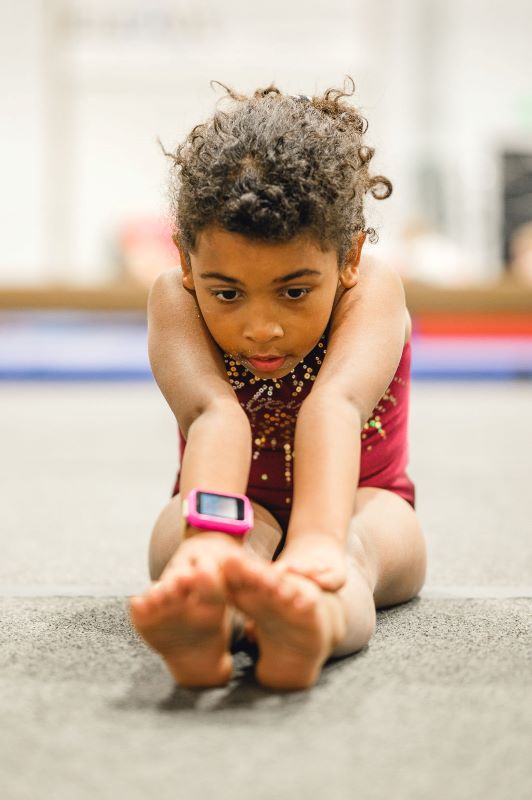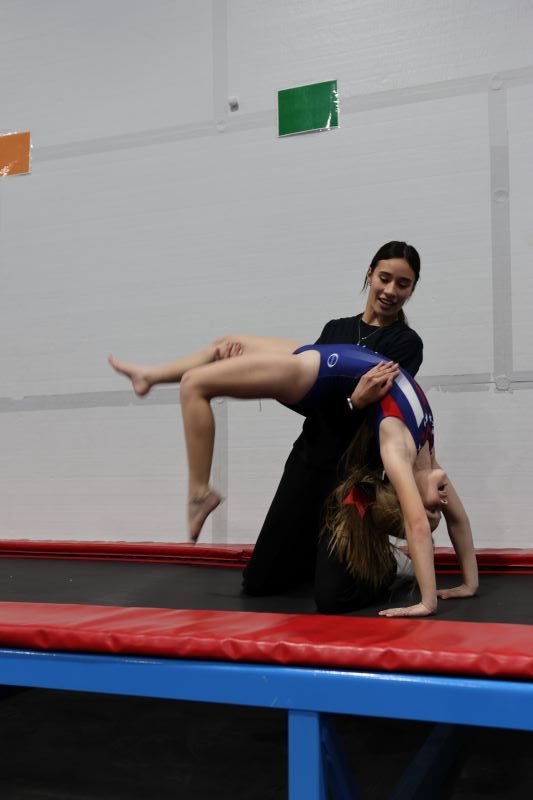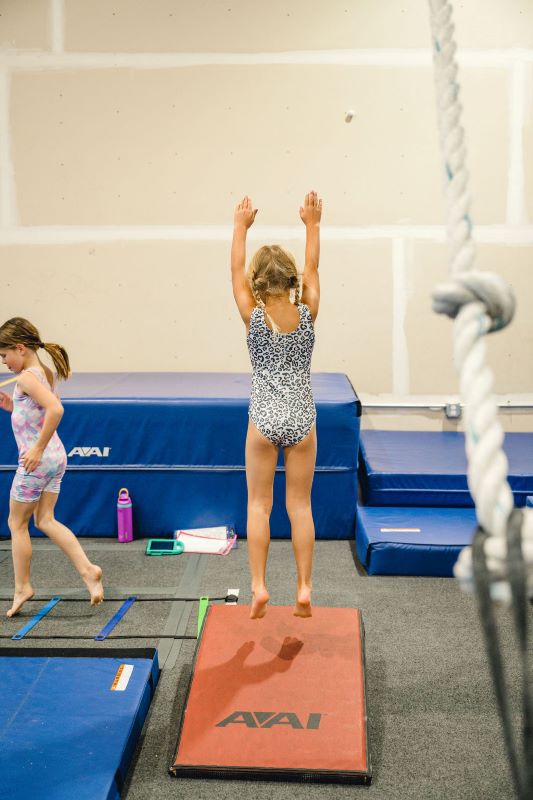Gymnastics is an exhilarating and rewarding sport that teaches discipline, builds strength, and boosts confidence. However, as with any physically demanding activity, it comes with its fair share of minor injuries and discomforts.
While serious injuries are less common, everyday inconveniences such as rips, shin splints, and muscle fatigue are a part of the gymnastics journey. Addressing these minor injuries promptly can ensure gymnasts stay healthy and perform at their best while avoiding more serious problems.
This guide will help parents and gymnasts learn how to prevent and care for common gymnastics-related issues. By understanding these injuries and taking proactive measures, gymnasts can recover quickly and continue pursuing their passion with minimal interruption.
Common Minor Gymnastics Injuries
Rips and Tears
Cause: Rips occur due to friction on the hands from gripping bars, rings, or other apparatus during routines. Over time, repetitive motions cause pressure on the skin, leading to calluses being torn off and exposing raw, tender areas.
Symptoms: Broken or raw skin that stings or bleeds, often making it uncomfortable or painful to continue gripping equipment. Rips can vary in severity, from mild redness to deeper tears that take several days to heal. Tenderness under a callus can often signal a potential rip.
Shin Splints
Cause: Shin splints result from repetitive stress on the lower legs, often due to running, tumbling, or jumping on hard surfaces. Poor technique, insufficient rest, or improper landings can exacerbate the issue.
Symptoms: Pain and tenderness along the front of the shin that may increase with activity. Gymnasts may also experience mild swelling or a dull ache even during rest. Ignoring early signs can lead to prolonged discomfort.

Mild Sprains and Strains
Cause: Sprains and strains often happen when a gymnast lands awkwardly, twists unexpectedly, or pushes any body part into a painful position. These minor injuries involve damage to ligaments (sprains) or muscles and tendons (strains).
Symptoms: Mild swelling, tenderness, and discomfort in the affected area. Movement may be slightly limited, and there may be some bruising in moderate cases. The pain usually subsides with proper care and rest.
Overfatigue and Muscle Soreness
Cause: Overfatigue occurs when gymnasts train excessively without adequate recovery, often compounded by insufficient hydration, nutrition, or sleep. Muscle soreness results from microscopic tears in muscle fibers caused by intense or repetitive activity.
Symptoms: General tiredness, a feeling of heaviness in the limbs, and difficulty performing at usual energy levels. Soreness may present as stiffness or mild pain in muscles, typically peaking 24-48 hours after intense activity. Gymnasts should consult their coach if overtraining is suspected to prevent more severe issues.

Injury Prevention Tips for Parents and Gymnasts
Pre-Practice Preparation
Warm-Ups: Encourage gymnasts to dedicate time to dynamic stretching and light cardio to prepare muscles and joints.
Nutrition and Hydration: Ensure a balanced diet and proper hydration to maintain energy levels and aid muscle recovery.
Skin Care for Rips
Hand Care: Teach gymnasts to trim calluses regularly and moisturize their hands after practice to maintain skin elasticity.
Preventive Measures: Use grips and tape during routines that cause significant friction to reduce the likelihood of rips.
Protecting the Shins and Joints
Technique: Encourage proper landing techniques and teach gymnasts to roll out impacts to minimize stress on joints.
Avoiding Overfatigue
Rest Days: Schedule adequate rest days to allow for muscle recovery and avoid burnout.
Sleep Routine: Ensure gymnasts have a consistent sleep schedule to support their physical and mental health.
Caring for Common Gymnastics Injuries
Rips and Tears
Cleaning: Wash the affected area with mild soap and water to prevent infection.
Treatment: Apply a protective ointment and cover with a breathable bandage. Avoid activities that aggravate the rip until it heals.
Shin Splints
Rest: Reduce or avoid high-impact activities for a few days to allow recovery.
Ice: Apply ice packs to the shins to alleviate pain and swelling.
Stretching: Focus on stretching the calves and shins to improve flexibility and relieve tension.
Mild Sprains and Strains
R.I.C.E Method: Rest, Ice, Compression, and Elevation are key to managing sprains and strains.
Light Movement: Once the swelling subsides, reintroduce light stretching to maintain flexibility.
Muscle Soreness and Overfatigue
Epsom Salt Baths: Soaking in a warm Epsom salt bath can ease muscle tension.
Massage: Gently massage sore areas to improve blood flow and promote relaxation.
Hydration and Nutrition: Encourage water intake and protein-rich meals to aid muscle repair.

Role of Parents in Supporting Recovery
After Practice Care
Check in with your gymnasts after each practice to ask how they’re feeling. Early detection of soreness or discomfort can prevent injuries from worsening.
Communicate with Coaches
Keep coaches informed about any injuries or fatigue. They can adjust training plans to accommodate recovery needs and prevent further strain.
Conclusion
Minor injuries are a natural part of gymnastics, but with the right prevention and care, they don’t have to slow a gymnast down. By staying proactive and addressing issues like rips, shin splints, and overfatigue promptly, parents can help their gymnasts stay healthy and focused on their goals. Gymnastics is a sport of resilience and determination—and with a little extra care, gymnasts can continue to thrive and enjoy every leap, flip, and tumble.
Try it FREE!
We offer one free trial class to all students who are interested in our programs. From NinjaZone to Tumbling, give one of our classes are shot. After all…. it’s FREE!


